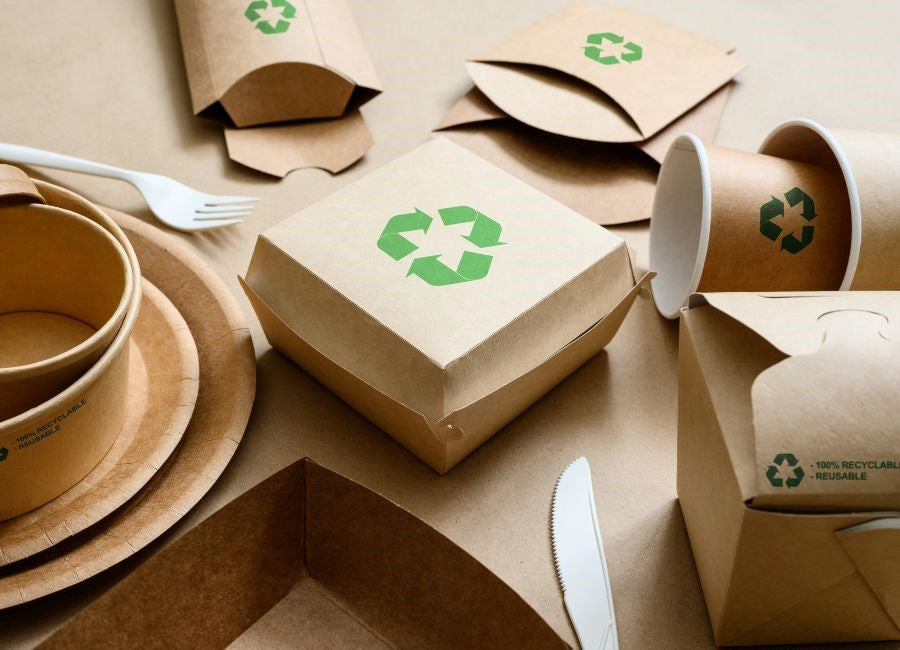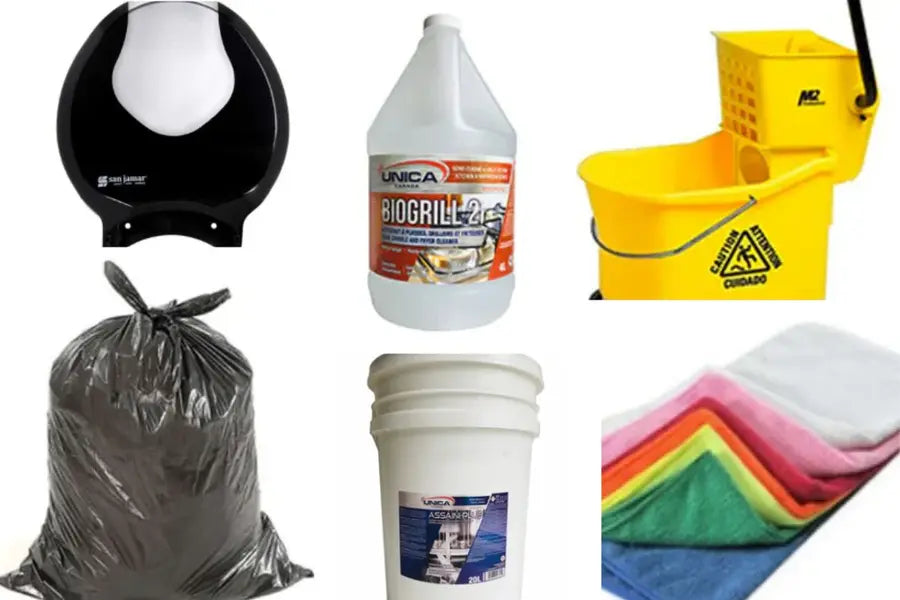Ever walked through the grocery aisle, picked up a product, and thought, ‘Wow, this packaging is perfect!’ It’s easy to assume that great packaging is just about aesthetics, but there’s so much more going on behind the scenes. From preserving freshness to ensuring food safety and even influencing buying decisions, the food packaging solutions do more than meets the eye.
But how do you choose the ideal food packaging for your products? The decision is far more complex than selecting a material or a colour scheme. Businesses need to consider various key factors in their mind to determine the best food packaging solution. Moreover, in today’s eco-conscious market, where being sustainable is becoming a common consumer requirement, the decision-making process for food packaging solutions further gets complicated.
To clear all your doubts regarding the complications of choosing a food packaging solution, Groupe LKG has compiled a detailed blog post. From understanding the unique characteristics of your item to discussing the common food packaging solutions that resonates with your target audience, we’ll walk you through all the necessary information.
So, without further ado, let’s jump straight into it.
Key Consideration #1: Understanding Your Product’s Specific Needs
First and foremost, analyze the unique characteristics of your product to select the right food packaging. Each type of food product has its own needs (whether they are related to protection, storage, or handling).
The table below suggests an ideal food packaging solution for different items based on their unique characteristics.
|
Food Items |
Unique Characteristic |
Ideal Food Packaging Option |
|
Fresh Produce Items Like Dairy Products, Lettuce, Berries and even, Meats |
Highly Perishable |
MAP (Modified Atmosphere Packaging) |
|
Pastries, Chips, or Baked Goods
|
Highly Delicate & Fragile |
Packaging with Built-In Padding like Clamshells |
|
Frozen Foods/Chilled Items |
Highly Sensitive to Extreme Temperature |
Insulated Packaging like Plastic Laminates |
(According to The Food and Agriculture Organization (FAO),1/3rd of food produced gets lost or wasted annually. The FAO estimates that 30-40% of this waste is due to inadequate packaging, storage, transportation, or processing.)
Portion Size and Usage
Many businesses or brands ignore this factor - the choice of the packaging of your product also depends upon how your product will be consumed. For example, Bulk packaging is ideal for family-sized portions of snacks, rice, or cereal, which are typically purchased for household use. However, products like yogurt, snack bars, and beverages are mostly available in single-serve packaging. This is because single-serve packaging offers top-notch portability, allowing consumers to carry and dispose of it.

(In 2023, the demand for single-serve packaging in the food sector saw a rise of 7%, reflecting a growing consumer preference for convenience. With a CAGR of 5.46%, the single-serve packaging food market is projected to surpass 63.74 billion by 2032.)
Key Consideration #2: Analyzing Material Options and Their Benefits
Many entrepreneurs in the food business get confused whenever the conversation about choosing a light food packaging solution takes the centre. The reason behind this is the availability of packaging solutions (made of different materials). Logically, a specific brand/business should choose a packaging solution that resonates with the product’s characteristics and the target audience’s demands. However, due to the lack of knowledge and awareness, many small brands and businesses get trapped in this web. Below is a breakdown of some of the most commonly used packaging and their specific benefits.
1. Plastic Packaging
Plastic remains one of the most popular food packaging materials due to its versatility and cost-effectiveness. There’s no doubt that plastic packaging solutions are widely popular. However, one should also consider the severity of the harmful impact they make on the environment. According to the ‘Welcome to the United Nations’ report, around 46% of plastic waste is landfilled, posing increased land and water pollution risks. Moreover, 22% of the plastic waste, including packaging options, is mismanaged, resulting in the soil pollution.
Due to the harmful environmental impacts of plastic packaging, many businesses have made a shift toward more sustainable option.
The only reasons some businesses are still using this type of packaging option are the following:
Pros
- Lightweight and Flexible
- Cost-Effective
- Excellent Moisture and Oxygen Barriers
Cons
A SIGNIFICANT CONTRIBUTOR TO POLLUTION
Commonly Used In
Plastic is widely used for packaging various food products, such as frozen foods, snacks, ready meals, and beverages. For example, polyethylene (PE) is often used for frozen food bags, while polyethylene terephthalate (PET) is common for beverage bottles.
(NOTE: As an advocate for environmental safety, Groupe LKG wants all types of food businesses to not use plastic for packaging. Let’s put the safety of our environment first!)
2. Glass Packaging
If you’re looking for the best alternative to plastic packaging solutions, look no further with glass. It is reusable and 100% recyclable, making it an eco-friendlier option compared to plastic. According to a report by Glass Packaging Institute, around 80% of recycled glass is used to make new containers. Besides being an eco-friendly option, it conveys a sense of luxury and quality, enhancing the product’s appeal, especially in industries like wine, spirits, and gourmet foods.
Pros
- Airtight and Non-Reactive
- Reusable and Recyclable
- Premium Look
Cons
- Heavy and Breakable
- Higher Cost
Commonly Used In
Glass is typically used for the packaging of beverages, jams, sauces, and other products that benefit from its premium properties. For example, glass jars are often used for pickles and preserves.
3. Paper and Cardboard Packaging
Paper and Cardboard have gained popularity due to their sustainability and versatility. These materials are often used for products that don’t require heavy protection, making them a favourite for eco-conscious brands. According to the American Forest & Paper Association, 68% of the waste paper products, including packaging, were recycled in 2022. This was the highest number ever since the beginning of the annual recycling process of paper.
Pros
- Sustainable and Biodegradable
- Versatile in Shape
- Excellent Branding Opportunities
Cons
- Minimum Protection Against Moisture
- Prone to Tearing or Crushing
Commonly Used In
Paper and cardboard packaging is ideal for dry goods such as cereals, baked goods, pasta, and tea. For example, cereal boxes and bakery bags are often use cardboard.
4. Metal Packaging
Metal packaging is most least used food packaging solution. Metal, especially aluminum and steel, is favoured for its strength and ability to protect food over long periods. This is why it is regarded as the ideal option for canned goods and beverages.
Pros
- High Durability
- Product Protection
- Highly Recyclable
Cons
- Heavier and Costlier
- Limited Design Flexibility
Commonly Used In
Metal is typically used for canned foods, beverages, and long-lasting products such as soup, soda, or canned vegetables. Aluminum cans are popular for soft drinks, while steel cans are often used for soups and sauces.
In an eco-conscious world, avoid choosing plastic as a food packaging solution. Instead, go for materials like glass or paper, which are eco-friendly options.

Key Consideration #3: Design and Branding Complexities
As an entrepreneur, you would know this,
“Your packaging of the food item is the biggest representative of your brand’s identity.”
Whether your brand conveys luxury, sustainability, or affordability, the packaging design and material need to reflect these core values. Moreover, the packaging design should be in such a way that it stands out on crowded shelves, attracting consumers like a magnet. To do so, you can opt for custom-designed shapes, advanced printing techniques (embossing, foil stamping, and UV coating) and limited-edition packaging to elevate excitement among consumers.
Speaking of consumers,
Do you know what the biggest responsibility of any food-related brand is?
Don’t put stress on your mind! Let us tell you – it’s none other than the fulfillment of consumer needs. Now, consumer needs can be any type – whether it’s related to the ingredients in your product, its quality or even aesthetic packaging. However, in the digital world, the biggest need of any consumer is to neglect all those brands which harmfully impact the environment. In short, consumers want sustainable brands that prioritize eco-conscious packaging and overall products.
Thus, food-related businesses have to fulfill this special consumer need to catch a consumer’s eye and encourage them to buy your item.
Don’t consider this as an opportunity to earn some cash; instead, gain genuine consumer support by empowering the concept of sustainability.
Groupe LKG: A Premier Source of the Food Packaging Solutions
After reading up here, many of you might be considering buying superior-quality food packaging solutions. Right? If that’s the case! Look no further than Groupe LKG. With years of experience, Groupe LKG is a premier source of food packaging solutions. We provide seamless food packaging supplies all over Montreal. Explore our collection of sustainable food packaging solutions, which features wooden foot kits, paper bags & more. Let’s together make this world – a safer and green place. Go through our collection to place an order now!




Laisser un commentaire
Ce site est protégé par hCaptcha, et la Politique de confidentialité et les Conditions de service de hCaptcha s’appliquent.